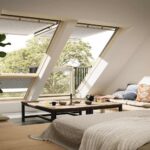Some have expressed concerns about keeping up with log home maintenance. Tales of log homes and cabins deteriorating quickly and requiring costly restoration have been shared, causing fear among some.

The actual tale of how the houses came to be that way is an intriguing one. Some of the homeowners lacked the knowledge to maintain wood, while others simply didn’t bother with their logs. If you take the time to research and plan in advance, you can minimize the resources spent on your log home maintenance routine. This ultimately means less time, money, and energy invested.
You should be able to dispel some myths and start down the path to a well-kept log home by asking the following questions:
Myth: Taking care of a log home requires a lot of time.
Fact: There is no need for log cabins to require an excessive amount of maintenance. Smart design choices and preparation can significantly reduce upkeep. Effective methods of preventing issues include having large overhangs, porches, managing landscaping, and using proper foundations. If you acknowledge from the start that log homes by eLoghomes are not your typical residence and demand specialized care, it is entirely feasible to design and prepare accordingly.
Myth: Maintaining a log home is difficult.
Fact: Maintaining a log home is not always a simple task. So, how do you keep it in top shape? The key is regular cleaning: Every season, be sure to remove dust, mold, and pollen from the logs, and make sure the wood is dry and clean before and after staining. Remember that the south and west-facing walls will require extra care because of their exposure to the elements. If cleaning your log home seems overwhelming, there is always the option of utilizing a professional maintenance service.
Myth: Mold issues plague log homes.
Fact: Whether it’s on your backsplash or shiny rooflines, mold can creep up on any surface. More moisture means more mold growth, so it’s important to monitor areas that are shaded by trees or lack sunlight, like the north side of your home. This is especially true after a rainy day, as these areas tend to retain moisture for a longer period of time. Your logs can last a lifetime if you keep them dry and off the ground.
Myth: Insects are attracted to log homes commonly.
Fact: The industry has come a long way in the last two decades, with notable advancements. Borate, a natural mineral, is credited for keeping termites at bay, and insect-damage is now a thing of the past. That said, carpenter bees have emerged as a concern. Prevent harm by applying liquid formulations, and dusts containing boric acid. Once the bees have left, caulk, finish stain, and block any entry points with steel wool.
Myth: Stains on log homes are bad for the environment.
It is a fact that older stains with high volatile organic compounds (VOCs) have been modified to include fewer air pollutants. Current vegetable oil-based methods for wood stains receive too much praise, as diluted petrochemical stains are just as eco-friendly as their watered-down counterparts. Oil-based stains will continue to have a robust, viable, and environmentally friendly market even though creating compatible oil-based stains needs more formulation knowledge and sophistication than their water-based counterparts.
Myth: The majority of log stains are identical.
Each stain provider has its own system and formulations, and they all strive to provide the greatest service for the longest possible time at the most affordable cost. This has led to the development of numerous systems throughout the log home sector. Your best option is to become knowledgeable about all the products on the market, attempt to establish which will suit your needs the best, and ask your log home manufacturer which stains they suggest. The decision-making process is influenced by the type of wood, the environment, the age of the house, as well as time and cost.










Leave a Reply